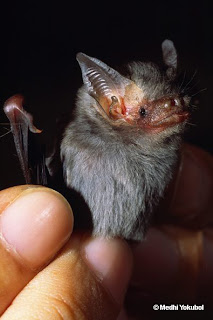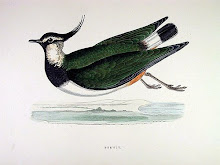Wednesday 26 November 2008
A bird fact for 7th week
DID YOU KNOW: swallows and swifts mate mid-flight mid-air? (not with each other though. as far as i know.)
Saturday 15 November 2008
Bird of the Week, MT05

THE WIGEON
(Eurasian variety)
Not to be confused with the pigeon, the wigeon is a river bird belonging to Family ANATIDAE, which means 'Geese, Swans and Ducks'. The male is a bird of many colours: he has a yellow forehead, an orange-chestnut head, neck and breast, a grey back and flanks, white underparts and a large white patch on the wing. The female is less fortunate, being brown and mottled. Like last week's bird (the brambling - please see below to have your memory refreshed), wigeons are at their best in winter, when they can be seen throughout the British Isles. In fact, our male wigeon is a rather sorry sight in summer - in common with many other drakes, this is his "eclipse" period when most of the smart characteristics of his plumage are lost.
If you take a walk by the river and listen carefully you may hear the drake's pleasing whistle ("Whee-oo!") or the duck's purring growl.
Monday 3 November 2008
some bird facts for 4th week
DID YOU KNOW: a wren only weighs as much as a 20p piece?
DID YOU KNOW: turkey feathers are wonderful for cleansing auras, the bowels, and the entire digestive tract?
DID YOU KNOW: turkey feathers are wonderful for cleansing auras, the bowels, and the entire digestive tract?
OTHER THINGS WITH WINGS

some stirrings of concern have reached our ears. 'what about OTHER things with wings?'
we are not out to disenfranchise any species, and we do have a place in our hearts (and society) for things that have wings that are not birds.
to this end, please read and savour the facts below about KITTI'S HOGNOSED BAT
also known as the bumblebee bat, this little feller measures only about 3cm across. this makes it, not only the world's smallest bat, but one of the smallest mammals in general (with and without wings). it has a little piggy nose and is reddish brown in colour.
it lives in burma and it is extremely rare. this is probably to do with the fact that females only give birth to one baby bat per year. also that they are so small, any kind of census is unreliable. but if you're interested in having a go, why not follow the tips outlined here: http://www.edgeofexistence.org/edgeblog/?p=468
THE BIRD ON THE STREET, 4th week
We must needs look back before we can look forward. Unless we are owls, who can do both whenever they like.
Bird events of the past seven days:
1. A Eurasian Eagle Owl graced the skies of Exeter College last Thursday. Manfully swooping in to do the pigeon-intimidation in place of a lesser bird (an inefficient and moody harrier hawk), the owl was received with open arms by the birdloving folk of Exeter. One young man was heard to say that its size and bulk were comparable to that of the sort of ornamental stone sphere found on the end of walls. http://en.wikipedia.org/wiki/Eurasian_Eagle-owl to see his extremely menacing threat posture married with the wisdom of ages (the owl, not the young man)
2. We must not say too much, but we may be receiving CELEBRITY ENDORSEMENT from a birdloving and excellent celebrity...as soon as we know more, we will sing like birds.
Bird events of the past seven days:
1. A Eurasian Eagle Owl graced the skies of Exeter College last Thursday. Manfully swooping in to do the pigeon-intimidation in place of a lesser bird (an inefficient and moody harrier hawk), the owl was received with open arms by the birdloving folk of Exeter. One young man was heard to say that its size and bulk were comparable to that of the sort of ornamental stone sphere found on the end of walls. http://en.wikipedia.org/wiki/Eurasian_Eagle-owl to see his extremely menacing threat posture married with the wisdom of ages (the owl, not the young man)
2. We must not say too much, but we may be receiving CELEBRITY ENDORSEMENT from a birdloving and excellent celebrity...as soon as we know more, we will sing like birds.
BIRD OF THE WEEK, MT04

look what we have for you!
fourth week bird of the week is the BRAMBLING
this cheeky little chappie is small and round and, apparently, gregarious in winter. so do make friends. he's mostly a country bird but he will hang out with chaffinches on garden crawls in the colder months.
he has an orange breast and a white tummy. when he flies you can also see his long white rump. (we're not sure which part of the bird this refers to)
fourth week bird of the week is the BRAMBLING
this cheeky little chappie is small and round and, apparently, gregarious in winter. so do make friends. he's mostly a country bird but he will hang out with chaffinches on garden crawls in the colder months.
he has an orange breast and a white tummy. when he flies you can also see his long white rump. (we're not sure which part of the bird this refers to)
Subscribe to:
Posts (Atom)

